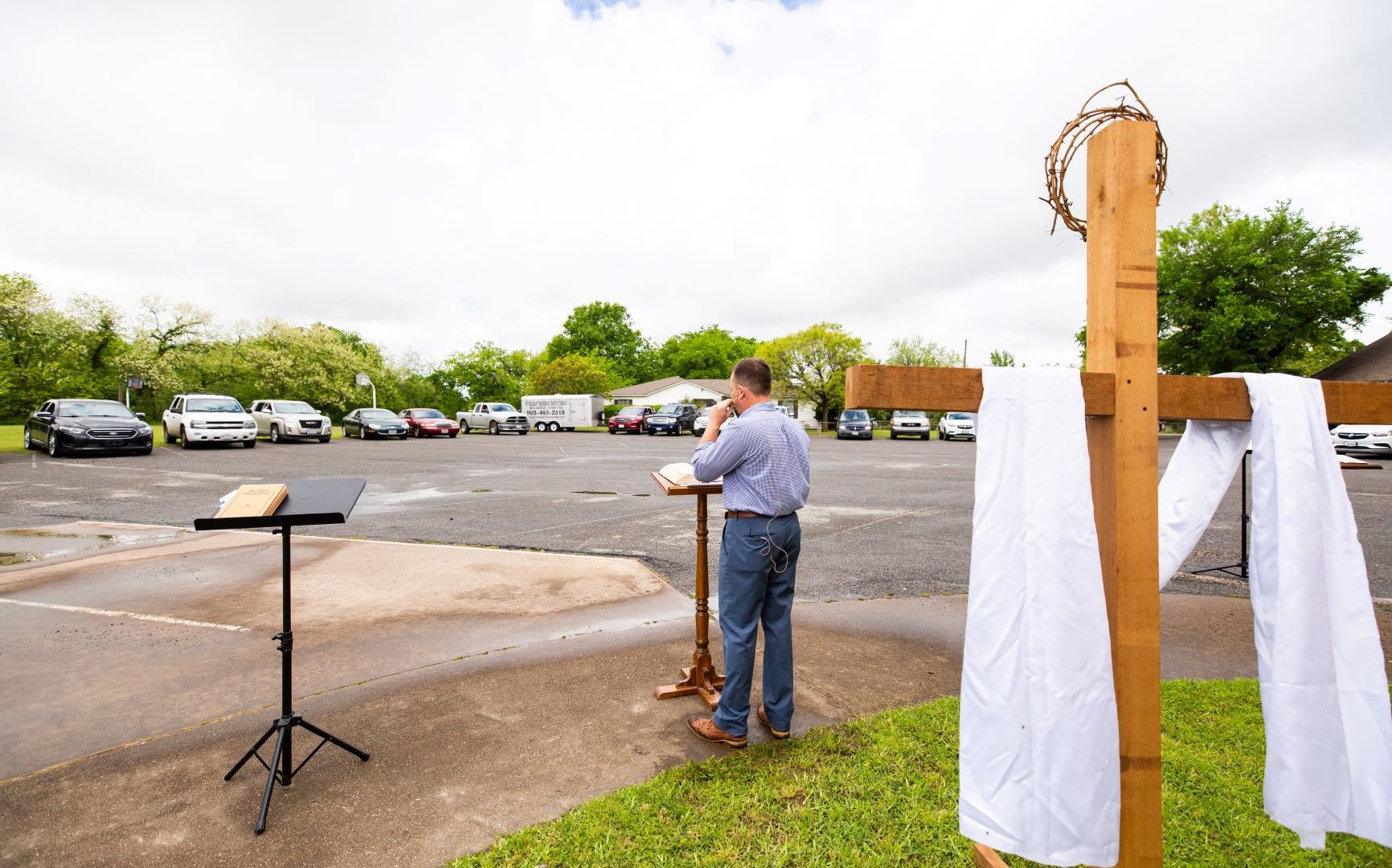By Monica Guelman
With the onset of the Coronavirus outbreak in early March that forced many churches to cancel in-person Sunday services, church meeting, and youth camps, and moved many of these gatherings virtually, houses of worship have been struggling to balance safety with the needs of the congregation they serve.
Although churches and other religious institutions are considered essential businesses and were exempt from earlier stay-at-home orders in many states that have allowed them to remain open as long as they followed CDC guidelines (including encouraging the use of masks among staff and congregants, promoting social distancing and intensifying cleaning, disinfection, and ventilation), many congregations have opted to move services outside to their parking lots.
Congregants can stay safely in the comfort of their cars while listening to the service. But how can we do that?
Car radios immediately came to mind using an FM transmitter. To use an FM transmitter to broadcast the service to car radios, you have these options:
- Use an FCC approved commercial FM transmitter and get an FCC license
- Use an FCC certified license-free FM transmitter
The advantage of using an FM transmitter is that no additional devices are needed to be purchased for congregants to listen to the service inside their cars.
Commercial FCC approved FM transmitters have a large coverage range. On the negative side, they are more expensive than other options and require an FCC license that is not always easy to obtain.
License-free transmitters broadcast at extremely low power, around 1 milliwatt, and their coverage range is limited to anywhere between 50 and 150 feet, depending on the area. You also must be careful of not interfering with any licensed FM stations, and it might be challenging in certain urban areas to find an available frequency.
Although you may find inexpensive high-power FM transmitters online, most of them specially found in marketplaces sold by non-U.S. sellers do not carry an FCC ID, and its use is consequently illegal and liable to fines.
An option that does not pose the inconvenience of working within the commercial radio stations band is using an Assistive Listening FM Transmitter in the 72-76 MHz band. Some of the advantage include:
- It is license free
- It can broadcast at a higher power
- It covers a much larger range, typically up to 1,000 feet
- It is legal (no fines!)
- You do not have the risk of interfering with a licensed radio station as long as you’re using an FCC-approved transmitter.
- Most houses of worship already have an existing assistive listening system for hard-of-hearing congregants or a language interpretation system for their non-English speaking families.
The only disadvantage is that it does not work on the car radio, and FM wireless receivers are needed in the 72-76 MHz band.
Jeffrey Trimmer, deacon at Columbia 7th Day Adventist Church, recently purchased a language interpretation system to be used for their drive-in religious services.
He said, “Columbia 7th Day Adventist Church has a small congregation of around 40 to 50 people, and several of our congregation members speak Spanish as their primary language. We do have an interpreter available when the pastor gives his messages. But up until now they both have had to use separate microphones and alternate speaking so the message could be delivered in English and Spanish. A translation system will upgrade our church’s ability to have bi-lingual services. We believe that this interpreter system will allow everyone to have the ability to hear the message, without any halts or delays in the delivery of the sermon. It is our desire to grow the Hispanic portion of our church congregation.”
Wi-Fi Audio Broadcasting is another option. It uses a server that takes the audio from the preacher’s microphone and converts it to a digital format so that the audio content can be sent through Wi-Fi to smart phones. People can download a free app on their cell phones and listen to the service.
The advantage of this option is that congregants can use their cellphones, and there is no need to purchase additional receivers. The disadvantages are that congregants may need broader knowledge of how to connect to a Wi-Fi network with their phones and install an app. There is a small delay that should be considered when synchronizing with video screens. In some older cellphones, it might have a poorer performance.
There is no right or wrong solution, as both FM systems and the Wi-Fi solution mentioned above have their own pros and cons.
In most cases, you need to consider your church’s special circumstances, taking into account several factors, such as the size of your congregation and parking lot space, your budget, future use as the 72-76 MHz transmitter can be used post-COVID-19 for language interpretation and assistive applications, or how tech savvy your audience may be.
Monica Guelman is vice president of sales at Conference Microphones.com.











